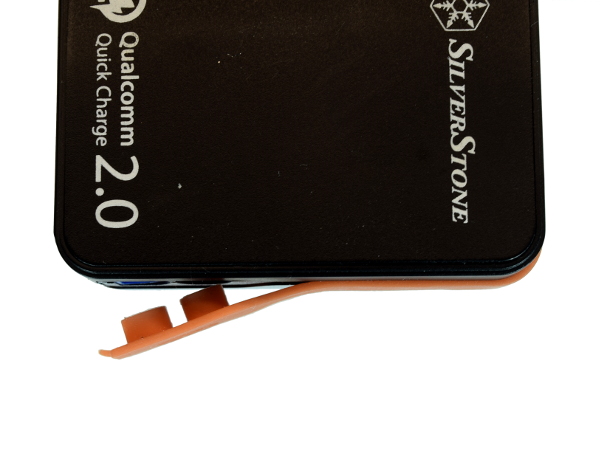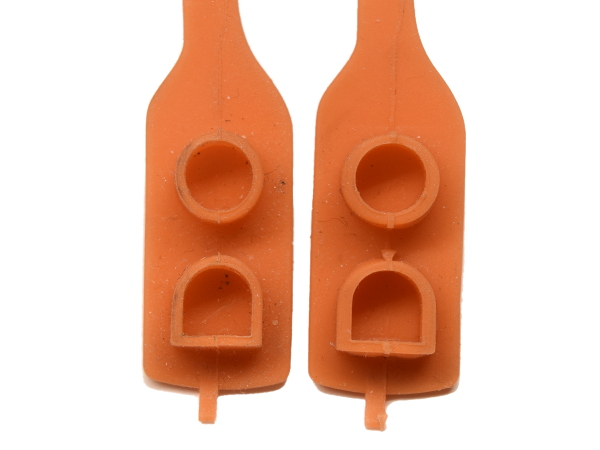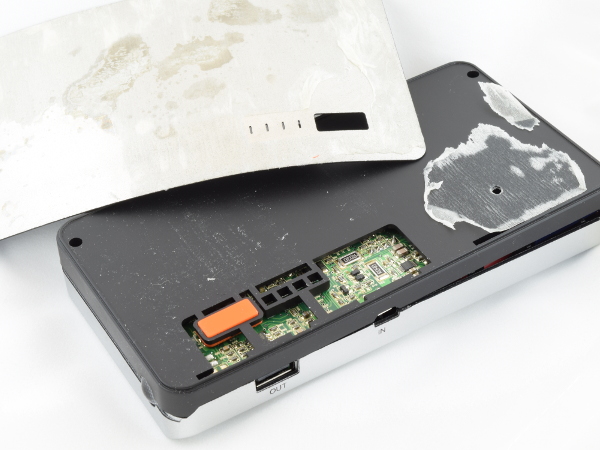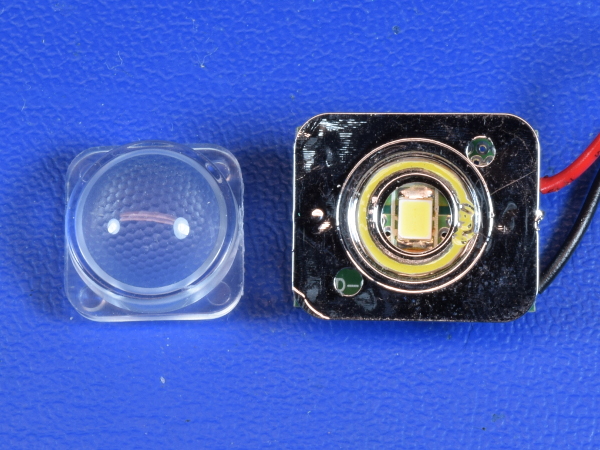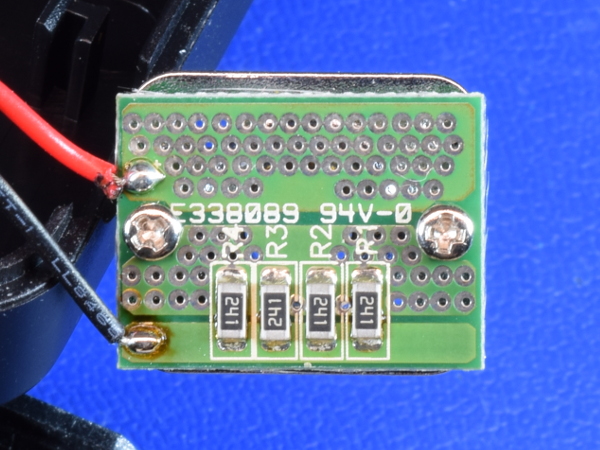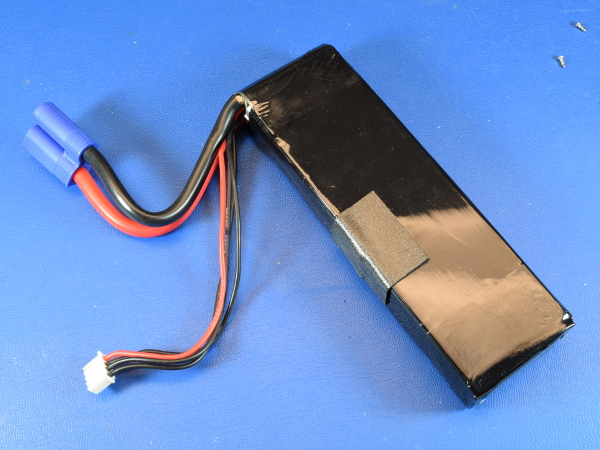Silverstone PB06 USB Power Bank Tear-Down
Business End
At the opposite end from the flashlight, we find a jumper cable port hidden behind an orange cap. To ensure good contact, the male pins are split in six segments, guaranteeing a minimum of six contact points with their respective counterparts.
Unlike some of the more expensive jump-start batteries requiring you to push a button to turn the 12V output on, the BP06’s 12V output is always on (you’ll find out why shortly). For safety reasons, it should be covered at all times when not in use, since 200A shorting out through a key ring or anything else would easily ruin your day.
MORE: SilverStone Stash Tour
MORE: Best Deals
Gravity Falls
The first PB06 I received had an excessively loose cover that partially slipped out under its own weight, and could be made to fall out by simply tapping the unit with the cap facing down, shaking the unit, or blowing air at the cover. When I measured the dimensions of the caps versus the size of the holes they fit into, I found the caps to be roughly 0.3mm smaller across than their respective holes.
On my second PB06, the caps fit very snugly. Perhaps too snugly, as I often had trouble putting them back on. Is SilverStone having shrinkage control issues with its silicone/rubber parts?
MORE: SilverStone Stash Tour
MORE: Best Deals
Old Vs. New Cover
What is the difference between the old and new units’ 12V covers? The second unit’s cover on the right has visibly thicker walls and wider molding seams than my first PB06’s on the left. Differences in material shrinkage can explain the thickness variation, while the wider seams and nub on top of the second unit’s D-shaped cover could be caused by the mold not closing completely.
Get Tom's Hardware's best news and in-depth reviews, straight to your inbox.
The bottom line is that 0.3mm could be all that stands between you and a loose cover that allows a 200A short-circuit in your pocket, bag, or backpack. You can work around this potential safety issue by storing the PB06 in its carrying case between uses.
MORE: SilverStone Stash Tour
MORE: Best Deals
A Different Sort Of Warm White
When I saw the large lens in front of the PB06, I was expecting a strong light with decent beam width and uniformity. When I shone it across the room, I was a little disappointed with how narrow, unevenly colored (yellow halo), and dim its beam (left) was compared to my generic 7×5mm pocket flashlight (right), which produced a brighter beam twice as wide with better uniformity.
While fooling around with the unit and leaving its light turned on for a few minutes, I noticed that that the LED area got uncomfortably warm. Did SilverStone use a grossly inefficient LED or current-limiting resistors powered from the 12V battery?
With that said, when people need flashlights, they’ll often be grateful to have any convenient light.
MORE: SilverStone Stash Tour
MORE: Best Deals
Breaking In
I initially missed the mention of an aluminum cover in the specifications. When I tried to open the PB06, the coarse texture painted on the aluminum cover made it feel like plastic, while the gap between aluminum and plastic along the perimeter of my first unit was so thin that I couldn’t tell that they were actually two separate pieces.
Then, as I was using the flashlight function, I noticed a faint crack of light just behind the LED’s corner (center of the image), which I thought was a molding defect. Since I couldn’t find any other spot to pry from, I started there thinking I’d rip through plastic and that’s when I discovered the aluminum sheet.
MORE: SilverStone Stash Tour
MORE: Best Deals
Delidded
After some amount of prying and scraping adhesive, the aluminum sheet came off, revealing three recessed screws and a large cut-out in the plastic housing over the PCB area with no ledge for the sticker to adhere to near the corner, explaining why some light shone through the top.
MORE: SilverStone Stash Tour
MORE: Best Deals
First Peek
With the clips undone, we're treated to our first glance at what’s inside. As you might expect from a power bank, the bulk of its internal volume is dedicated to the battery. Also unsurprising is the fact that the 12V connector ties directly into the battery pack with short #10 wires. Four wires connect the lithium pack to the PCB, which tells us that the circuitry is monitoring cell voltages at the very least, while another two thin blue wires are attached to a thermistor taped to the side of the pack for temperature monitoring. Lastly, in the bottom-right corner of the top cover, we find the flashlight LED module.
MORE: SilverStone Stash Tour
MORE: Best Deals
LED Module – Front
The flashlight module is made up of three parts: the PCB hosting what appears to be a 3025-size LED, a metallized plastic reflector, and a slightly cloudy plastic lens with a fine hexagonal light-scattering pattern molded into it.
MORE: SilverStone Stash Tour
MORE: Best Deals
LED Module - Back
Why did the LED area get so hot after a few minutes of continuous use? As I suspected, the single LED is powered directly from battery voltage (12V) via four 240Ω current-limiting resistors in parallel to spread the heat. With white and blue LEDs having a forward voltage of approximately 3V, this means 1.35W is being dissipated in the resistors to power a 0.45W LED. That’s three-quarters of the LED-related power turning the PB06 into a hand-warmer.
A simple way to drastically improve this would be to use a triple emitter LED chip, enabling the same brightness using one-third as much current.
MORE: SilverStone Stash Tour
MORE: Best Deals
Battery
There are no visible markings on the battery to tell us what it is. Of course, from its 12.6V floating output voltage and four-wire charge balance, we can readily deduce that it has three cells in series. The rectangular form factor also tells us that it must be a lithium polymer type. Lastly, the 10,000mAh total rating tells us that each of these cells must be rated at approximately 3333mAh each.
Now for the less intuitive part: since the 12V connection is intended for jump-starting cars and cars will often raise their voltage to 15V for the first several seconds after starting to give the battery a quick top-off charge, does the battery have built-in overcharge protection? It would need to be quite beefy to switch somewhere north of 200A.
MORE: SilverStone Stash Tour
MORE: Best Deals
-
Daniel Sauvageau For those wondering how that third unit turned out, its 12V cover is in-between the first two: tight enough not to slip out on its own, but not snug enough to stay put completely either. So far, the micro-B connector hasn't broken off from mild intentional abuse.Reply -
alextheblue For those who want jump-starting first, with a dash of USB charging, Noco's Genius Boost GB40 is solid. The GB40 is rated at 1000A "3 seconds" which falls somewhere between cranking and peak amps. They have even more powerful options too. They're pricey unless you find a good deal. Other good-looking (brand and otherwise) options I've run across that prioritize jump starting but still have decent USB 5V capability:Reply
- Omega's 80600. 350/700A peak. I've used this model. Also sold under Pro-Lift I-8006 series. 6000 rated mAh 5V capacity IIRC.
- Omega's harder-to-find 81100 unit. 400/800 amps - rated 11000 mAh
- Ravpower's RP-PB053 600A peak unit. 18000 mAh "raw"/unrated capacity.
- Ravpower's RP-PB063 1000A peak unit. 14000 mAh - rated?
- Bolt Power's D29 450/900A peak unit. 18000 unrated mAh.
- Wagan's 7506 V10 "400"/700A peak unit.
Of those probably the most interesting units is Ravpower's RP-PB063. It's still geared towards jump starting but it has faster charging than any of the other ones above - one of its USB ports even supports QC 3.0. -
Olle P Overall a nice in-depth review!Reply
Two oddities though:
1. This is NOT a 10Ah battery pack. Since the cells are connected in series it's just 3,3Ah.
2. The ripple is measured at ~9V. Shouldn't the USB output be 5.0V? -
Daniel Sauvageau Reply
Most power banks report the total combined rating of their lithium cells. Travel restrictions don't care if the cells are in series or parallel, all they care about is the total Wh or Ah capacity of the underlying cells. For the end-users, 50Wh is 50Wh regardless of series or parallel as well. When you buy a 5.2Ah power bank, you usually find a pair of 2600mAh cells in parallel but this only gives you ~4V, so you need a boost converter to get that up to ~5.1V. Since the PB06's battery voltage is 12.6V, it uses a buck regulator to bring that down to 5V or 9V instead.19542706 said:Overall a nice in-depth review!
Two oddities though:
1. This is NOT a 10Ah battery pack. Since the cells are connected in series it's just 3,3Ah.
2. The ripple is measured at ~9V. Shouldn't the USB output be 5.0V?
I suppose I should have tested at 5V too instead of 9V Quick Charge. Same inductor and switching frequency though since all the QC voltage selection chip does is change the switching regulator's feedback voltage divider, so ripples would still be quite significant at about half as much. -
Olle P Reply
There's a HUGE difference between watthours (stored energy) and amperehours (battery capacity), since the former takes the voltage into account.19543501 said:
Most power banks report the total combined rating of their lithium cells. Travel restrictions don't care if the cells are in series or parallel, all they care about is the total Wh or Ah capacity of the underlying cells. For the end-users, 50Wh is 50Wh regardless of series or parallel as well.19542706 said:1. This is NOT a 10Ah battery pack. Since the cells are connected in series it's just 3,3Ah.
The package clearly states 10 Ah, which it's not.
It's 3.3 Ah, 36 Wh.

